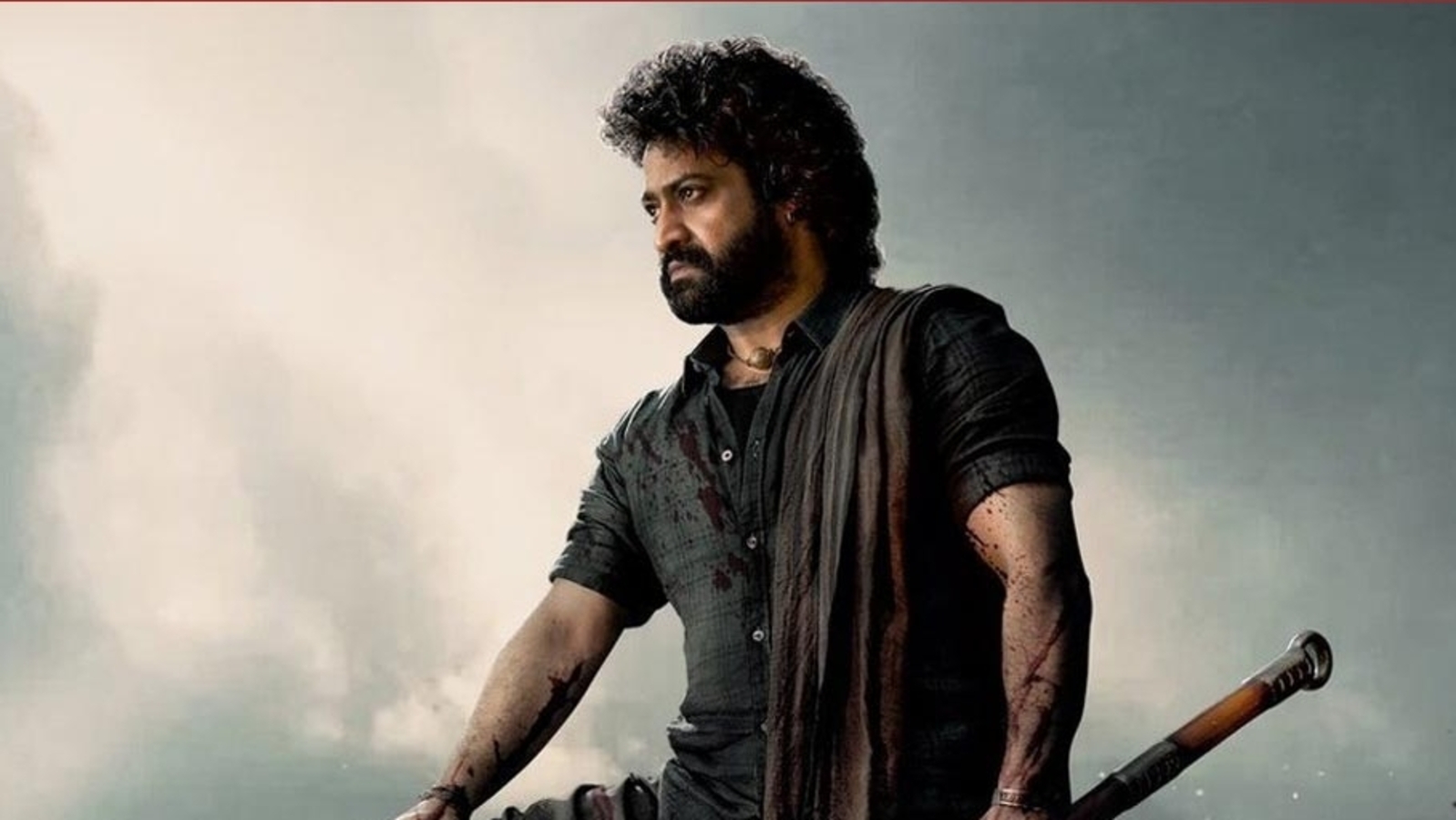SPOILERS AHEAD! In the beginning, we’re immediately treated to a glorious golden shot of the Box, also known as Lemarchand’s Puzzle Box, and even more fun, the Lamentation Configuration, being handled by Pinhead himself as he talks with the Auditor about the need for modernizing their works on humankind. Right after that, we’re whisked off to a man who clearly has issues, being invited by a mysterious and commiserating benefactor to a place of understanding and reward; a clear demonstration of the films platform and intentions.
Inside this dead house, the Auditor (Gary J. Tunicliffe) makes a record of the sinners, well, sins, gives them to the Assessor (John Gulager) who, yes, literally eats the pages salted with the tears of children, and then freaking regurgitates the mass to the three naked ladies who comprise the psychic Jury, to render their final judgment on said sinner. All of this is done with complacent malice, so much blood and gore and thick drooling mucus, the wet slap and crunch of prehensile chains we all recall from the original films. Like discovering the Box lost in your attic next to the corpse of a dead rat who tried to pry it open, there is no escaping the honest desires of your own heart, even when it leads to your downfall.
Before we can go any further, it has to be said that these new characters introduced – the Auditor and his antiquated typewriter, the Assessor and his vomit, the Jury ladies and their Bathory bath, even the Butcher (Joel Decker) and the Surgeon (Jillyan Blundell) – are not Cenobites or even part of the Order of the Gash, to which Pinhead belongs and rules with a bloody fist. Rather, these guys and fetish dolls are known as the Stygian Inquisition, and are another Order of Hell, just like the Gash. Sadly, none of this is mentioned in the film, so mistaking every last cut-up figurine for yet another Cenobite is perfectly understandable.
Also making a surprise appearance, is an actual honest-to-whomever Angel, known as Jophiel (Helena Grace Donald). She appears in white leathers and blinding bright light, to actually trade insults and orders with the master of pain himself, Pinhead, for the delicate matter of the disposition of a soul. Another bold risk for director Tunicliffe, for never before in the entire Hellraiser film mythology, have Angels been introduced before. Demons aplenty everywhere, sure, but never actual Angels.
But we’re getting ahead of ourselves! A dog-loving socialite named Crystal Lanning (Grace Montie) has been rather brutally killed, yet another in a string of ritualistic murders from the serial killer who calls himself the Preceptor. This self-proclaimed purifier has been performing ‘Seven’-style sin cleansing murders and the cop duo of the Carter brothers Sean (Damon Carney) and David (Randy Wayne), plus an unwanted tagalong in the form of Detective Christine Egerton (Alexandra Harris), have been assigned to the case.
The detective investigation into these ritual murders is kind of lame, plays out very similar to other direct-to-video Hellraiser sequels I could name, and is basically a foil to get one of the Carter brothers to that dead house where the Auditor does his nasty job. Which is fine, I guess, but it was rather superfluous and uninspired for this kind of plot hole to be used. Then again, we didn’t necessarily come to the dead house where Pinhead and the Auditor and his cohorts judge sinners for silly things like plot.
Or did we? The plot of the Preceptor and his works here on Earth aside, there is an amazing dynamic that goes on inside the dead house, not between the Preceptor or the Stygian Inquisition, no, it’s between Pinhead and Jophiel, over which side gets the Preceptors soul. I’m reminded of the reality of Angels from films like ‘Prophecy’, who carefully explain that dealing with actual Angels, those psycho m-f-ers who are the literal embodiment of Gods will here on Earth, is a much more terrifying prospect than most people think. So how did Jophiel get to the dead house, where she attempts to set herself against Pinhead in the matter of the disposition of the Preceptor’s soul?
Imagine, Angels acting on the orders of the side they represent, sent to the dead house to claim the Preceptors soul before it can be sent to the Orders of Hell, because despite everything he’s done to other humans, the purported “Good Side” thinks his works need to continue. Gives potential to see Pinhead, the Cenobites, the Stygian Inquisition and all the Orders of Hell in an entirely new way, not being the only bad guys in the room anymore.
The visual tone of the movie is done quite well, harkening back to the original two Clive Barker-led Hellraiser films, but more washed out and crumbling, like the nightmare sun-faded world of the original Texas Chainsaw Massacre movie. Even the never-ending blood and gore isn’t as stark-staring as the original films, but rather deepened and faded at the same time, indicating the march of time and a clear aversion to anything clean.
All the special effects and makeup tricks are used to a clear purpose in Judgment, and what CGI there is, is barely noticeable as an afterthought (which I prefer, ‘cuz practical effects rule). The mythology of the Box, of the Order of the Gash and Pinhead and his Cenobites, have all been pretty well established already, so writing a story already in the set-world and taking a seriously different turn with it was very likely a good choice on the directors part.
Though the storylines do get a little muddled and there wasn’t enough of the cop parts to keep me interested in that, the dead house and the Stygian Inquisition is fascinating, and the new dynamic of Pinhead versus other Orders and even Angels is amazing. And yes, I recognized Heather Langencamp in her tiny role as the landlady of an apartment the Carter boys check; doesn’t make much never-mind to me.
Finally, we will address the hook-headed elephant in the room, that is, the newest actor Paul T. Taylor taking the iconic role of Pinhead. Certainly it’s a vast improvement over the previous actor to play him, Stephen Smith Collins, but then that poor guy trying to play Pinhead when faced with that atrocity of a Hellraiser knockoff never stood a chance anyways.
Conversely, Taylor brings back a sense of majesty back to the character of Pinhead, a steadfast calmness that reminds me of the way Barker described the Hell Priest in his last Hellraiser novel, The Scarlet Gospels, and I am all for that. The iconic makeup of the nails in the head is more or less the same, but the hollows in Taylors eye-sockets and the different and updated look of his vestments, plus a somber and yet macabre voice all his own, make for a pleasing new version of Pinhead all around.
Remember folks, that in Hell those iconic nails in the head is actually a badge of office, as in leader of the Order of the Gash, that sort of thing, so literally anyone can wear them and be known as Pinhead. For you Cenobite trivia buffs out there, at one point the pins were even worn by Kirsty Cotton herself, in the Hellraiser comic books from BOOM! Studios. Doug Bradley did make the iconic original version of Pinhead his own for many long years and increasingly-bad movies, but anyone can become the avatar of Pinhead in Barker’s world, and somehow Paul T. Taylor managed it damn nicely.
One can easily see why Tunnecliffe named his magnum opus Hellraiser Judgment, but to truly call yourself a fan of the world, see the movie and judge for yourself. I’m willing to wager you die-hard Cenobite fans out there won’t be disappointed!

Movie
Upcoming NTR Junior projects

Nandamuri Taraka Rama Rao Jr., affectionately known as Jr NTR, has consistently enthralled audiences with his dynamic performances and versatile acting prowess. Following the successful release of “Devara: Part 1” on September 27, 2024, fans are eagerly anticipating his forthcoming projects. Here’s an overview of what’s next for this action superstar.

1. Devara: Part 2
After the resounding success of “Devara: Part 1,” which grossed over ₹466 crore globally, the sequel is highly anticipated. Director Koratala Siva has hinted that “Devara: Part 2” will be even more intense, stating that if Part 1 showcased 10% of Jr NTR’s capabilities, Part 2 will unveil the remaining 90%. Filming is slated to commence in the first half of 2026, with a targeted release by the end of that year.

2. War 2
Expanding his horizons, Jr NTR is set to make his Hindi film debut with “War 2,” directed by Ayan Mukerji. This sequel to the 2019 blockbuster “War” will see him sharing screen space with Hrithik Roshan and Kiara Advani. The film is part of the YRF Spy Universe and is scheduled for release on August 14, 2025, coinciding with the Indian Independence Day weekend.

3. NTR 31 (Tentative Title: Dragon)
In collaboration with acclaimed director Prashanth Neel, Jr NTR will star in a period drama tentatively titled “Dragon.” The film is set to delve into themes of immigration and is expected to be one of the most expensive projects for both the actor and the director. The movie is slated for a grand release on January 9, 2026.

Why Jr NTR is the Action Hero Everyone Wants to See
Jr NTR’s appeal as an action hero stems from his ability to seamlessly blend intense physicality with deep emotional resonance. His performances are characterized by a compelling screen presence, dynamic energy, and a remarkable ability to connect with audiences across diverse roles. This unique combination of skills has solidified his status as a leading figure in Indian cinema, making him the action hero everyone wants to see.
With a lineup of diverse and high-profile projects, Jr NTR continues to push cinematic boundaries and captivate audiences worldwide. His dedication to his craft and ability to reinvent himself with each role ensure that fans have much to look forward to in the coming years.
Movie
“Death of a Unicorn: A24’s Twisted Fairytale You Won’t Forget”

Headed to a wilderness retreat of a wealthy pharmaceutical CEO to hopefully land a lucrative job, widower Elliot and his reluctant daughter Ridley manage to have a car accident with a heretofore-thought creature out of legend, and hijinks ensue!
Oh this is an absolute gem of a movie y’all, brought to you by the genius minds of film production company A24, a delightful blend of horror and campy, almost idiotic, comedy. Make sure your seatbelt is buckled and let’s dive into this!
So Ridley (Jenna Ortega) is you typical teenager, angsty and missing her passed-on mother, full of acne troubles and secretly vaping while her dad Elliot (Paul Rudd) ignores her for much more than appearance purposes, while he schmoozes his way into the good graces of the family they’re going to stay with. Elliot ignores everything but his continued greed, for both money and continuous stability for him and Ridley, really, he swears, so when the misty mountains cause their electronics to go haywire and Elliot’s busy with that crisis, he doesn’t notice until it’s too late and BAM. You’ve hit an actual unicorn with your car.
Like most girls, Ridley can’t help but be fascinated by the poor mythical horse-like creature, and of course she reaches out to grasp the glowing horn, filling her head full of magic and her eyes full of stars and the cosmos, while Elliot has a much more, let’s say visceral, reaction. But rather than calling, I dunno, some sort of wildlife preserve or the cops or even considering burying the unfortunate horned horse, no, the baby is loaded like a downed stag into the back of Elliott’s car and they hurry on to the CEO’s wilderness retreat.
It makes sense that the changes to Ridley’s appearance are the first thing that allows O’Dell (Richard E. Grant) and his greedy, grasping family to understand that the body of the unicorn has healing properties. Wife Belinda (Tea Leoni) is your typical utterly vapid socialite who helps the poor downtrodden of whatever’s currently popular third world country, not for the do-gooder part of it, but for the optics. And their son Shepard (Will Poulter) is a walking poster boy for the arrogant frat boy type who could never settle on just one thing to be or do, and so he tries them all – archery, photography, mixology, music and various forms of pharmaceuticals, all while sporting these terrible fashion choices in shorts and rambling proudly about his nonexistent accomplishments. Griff (Anthony Carrigan) is the family butler and general verbal punching bag, and let us not forget the unfortunate pair of doctoral research scientists who get called in to examine the unicorn, Dr. Song (Steve Park) and Dr. Bhatia (Sunita Mani).
So we have a family of covetous types who all want to divy the unicorn up and sell its various parts for as much wealth and power as they can get, plus the pair of scientists who are flabbergasted to find themselves dissecting an actual unicorn that, hey, guess what, isn’t actually dead for really-real yet. Elliott’s trying to procure his and Ridley’s slice of the action, though honestly, his lawyerly powers of persuasion seem to be rather lacking in this regard, while Ridley is off doing some actual research on medieval unicorns and what the ancient legends in tapestries had to say about them. You know how the modern genie, with his Arabian lamp and his three wishes with their horrifically ironic consequences, actually stems from the ancient legend of that old monster, the creature born from fire that wants nothing more than to destroy all human life on Earth, the Djinn? Our modern legends and beliefs about unicorns is kinda like that.
So everyone, even our scientists with their experiments and O’Dell supposedly being an experienced animal hunter, seems to have forgotten that a horse is a mammal and therefore, has parents. And while everyone is concerning themselves with what to use the babies’ various parts for, only Ridley seems to have realized, that the babies’ sire and dam are coming for it!
We all know horses are smart, and that humans and horses can form an almost mythical bond, but when a stallion or even a dam’s ire is raised, they can attack and defend just as well as any rampaging beast, and do present a very real and dire threat. And these particular horses, with their shaggy midnight-black coats and hooves the size of monster-truck hubcaps, their fangs and absolute righteous rage at their baby being stolen, not to mention both mom and dad’s inherently magical nature, and those utterly badass war-unicorn horns, are here to wreak utter destruction and death upon the humans that would dare to eat, drink and snort, their baby!
Full of utterly ridiculous fun with human greed and the scarcely-remembered wonder of those magical creatures you heard about as a child, cheer along with the Jurassic Park-like screech of our rampaging parents to save their baby, in Death of a Unicorn, in theaters now!



